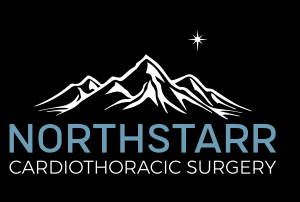After Surgery
Once you are ready for discharge from the hospital, you will be provided specific information about recovery and instructions before leaving the hospital. Listed below are some GENERAL guidelines that explain how to care for yourself, what to expect, when to contact the office, recommended activity levels, lifestyle changes, and follow-up care. Call anytime with questions or concerns.
Appointments
In general, we schedule follow-up appointments 2 weeks from discharge from the hospital. Call your primary care provider to schedule a 4-week post-surgery appointment and call your primary cardiologist to schedule 6 week post-surgery appointment.
Medications
- As you leave the hospital, you will have a form with your prescription(s) and appointment(s) written down. Bring a list of your medications to each of your medical appointments.
- Take your medications exactly as prescribed. Do not stop taking any medications without talking to your provider first. If you have any questions, please call our office.
- You may use over the counter stool softeners of your choice, especially if you have a preferred softener that has worked in the past. Some examples are colace or miralax.
Wound Care
- To prevent wound infection, it is important to shower daily. After showering, gently blot your wounds dry. Do not scrub your incision. Do not immerse yourself in water such as a bathtub, swimming pool, or hot tub for the first week.
- Do not apply any lotions, creams, oils, or powders to your incisions (unless prescribed by your doctor) until healing is complete and scabs have healed.
- Do not immerse yourself in water such as a bathtub, swimming pool, or hot tub for the first week.
- Dress in comfortable loose clothes that do not put undue pressure on your incisions. Check your incisions every day for signs of infection. Call if you notice the incision is opening, there is increased tenderness around the incision, there is increased redness or swelling around the edges of the incision line, any drainage from the incisions, or if you develop fever 100.5 F or greater.
Activity
- After heart surgery, your breastbone (sternum) is a broken bone and must be treated that way. It takes approximately 3 months to heal completely. You may have full range of motion, un-weighted.
- Lifting: Avoid putting too much strain on your sternum while it is healing. Avoid lifting, pushing, pulling more than 10 pounds each arm for 4 weeks after your surgery (a gallon of milk weighs about 8.5 pounds). This includes carrying children, pets, groceries, suitcases, etc. After the initial 4 weeks, avoid lifting, pushing, pulling more than 20 pounds each arm for an additional 8 weeks (for a total of 12 weeks).
- A balance of rest and exercise is necessary to your recovery. Plan to rest in between activities and to take short naps as necessary. Resting may also include sitting quietly for 20 to 30 minutes.
- Walking is one of the best forms of exercise as it increases circulation throughout the body and to the heart muscle. It is important to increase your activity gradually. Walk at your own pace on flat surfaces. If you get tired, stop and rest. Your goal should be to walk 2 miles/day by one month after surgery. This can be one mile twice daily, 1/2 mile four times daily, 1/4 mile eight times daily, etc.
- Stop any activity if you feel short of breath, experience palpitations, feel faint or dizzy, experience chest pain, or profuse perspiration. Rest until the symptoms subside. If they do not subside within 20 minutes, notify your doctor. Climb the stairs at a slow pace stop and rest if needed.
- Sexual relations may be resumed when you feel physically comfortable, unless instructed differently by your doctor. Affectionate displays are important after being separated from the people you love. It is important to find comfortable positions for your chest and leg incisions. For the first 3 months, do not support all your body weight on your arms.
- Light housework only, for about 3 months, such as dusting, dishes, folding laundry, cooking. No heavy yard work, gardening, carpentry, mowing the lawn or vacuuming for 2 months after surgery. Light gardening is OK (remember the 20-pound weight limit for the first 2 months).
- You may ride as a passenger in a car at any time. Remember to wear your seatbelt. You may discuss driving again at your follow up appointment. Your movements may be limited and your reaction time slower prior to this time. If going for longer car rides, stop every hour and a half to get out of the car and stretch your legs.
Back to Patient Resources

